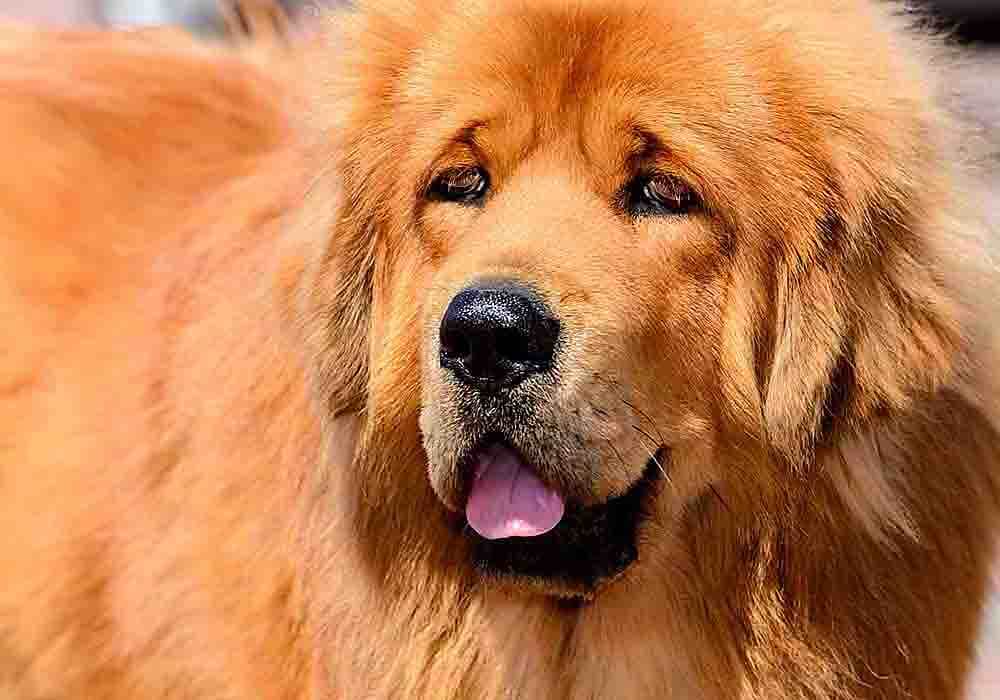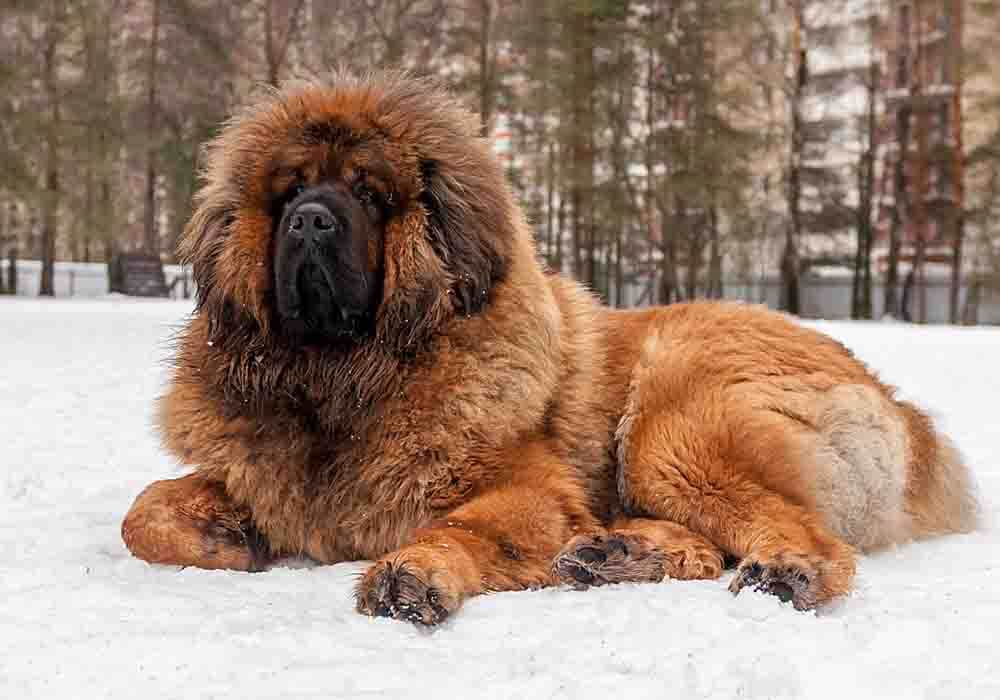Do Tibetan Mastiffs Shed?
by Ken Alden
Do tibetan mastiffs shed
The Tibetan Mastiff and its signature hairy frame were initially used to deter deadly predators from attacking the monasteries of ancient Tibet. Nowadays, these mountains of fuzz act as loving companions and are beloved pets worldwide. Still, Tibetan Mastiffs dogs are from cold mountain regions and shed accordingly.
Tibetan Mastiffs shed a little bit every day, but most of their shedding happens during seasonal changes in fall or spring. Due to this, owners should pay attention to their Tibetan Mastiff to check when they are shedding their fur.
Keeping your Tibetan Mastiffs' hair in check requires extra care that you may not be aware of. We have you covered and have detailed everything you need to know, such as the best times to groom, the necessary tools for the job, and how to identify any abnormal shedding.
Pro-tip: Ever try lifting a Tibetan Mastiff? Their weight can hurt not only your back but their joints when they hop down from cars, sofas or even your bed. To protect your back and theirs check out the best Mastiff ramps on Amazon.com now.

How Much Does a Tibetan Mastiff Shed?
Tibetan Mastiffs have a ‘double coat’ consisting of thick and long hairs on the outside, with a fuzzy coat underneath. With all this extra coating, These giant fluff balls need to ditch their coats periodically through a process known as ‘blowing coat.’
Tibetan Mastiffs usually shed their thick undercoat during spring and occasionally shed their lighter coat during fall in preparation for winter. On top of their heavy shedding season, Tibetan Mastiffs also shed smaller amounts of hair consistently throughout the year.
When Tibetan Mastiffs decide to blow their coat, the hair will come away in clumps that will cover the floor.
During shedding season, it may seem like they are shedding an alarming amount of fur, but it isn’t unusual for large dogs or breeds with double coats.
Pro-tip: Tibetan Mastiff anxiety, aggression, destructive chewing, jumping up, fearfulness, and other behaviors can be controlled with the right training program.
Here’s a great course that addresses these issues along with many other dog training basics: Check it out now!
How Long Do Tibetan Mastiffs Shed For?
You may be surprised to hear that Tibetan Mastiffs are light-medium shedders. That is because these dogs, unlike many other breeds in the dog kingdom, have set shedding seasons.
Tibetan mastiffs shed a little bit every day, but they only shed heavily during spring and fall. Periodic shedding is constant, albeit on a much smaller scale. Regular shedding never ends for Tibetan Mastiffs and is easily managed with a disciplined grooming routine.
These giant fluffballs shed at specific times of the year. This period is typically around Spring when the dog will undergo a molting process to prepare a new, warmer coat for the colder months of Winter.
If you’re fortunate, your wooly friend may also bless you with two seasons of shedding, depending on their environment. So, don’t be worried if you’re greeted with more doggy fluff later in the year.
Still, Tibetan Mastiffs will ditch some of their outer coats consistently, which is not uncommon in the dog world. Though this may sound daunting, with thoughts of fur-covered furniture, it is all easily kept at bay with a decent grooming routine.
How Often Should I Groom My Tibetan Mastiff?
Tibetan Mastiffs don’t impose much of a challenge when getting them groomed up and looking dapper. It’s merely a case of using the right tools, paying attention, and keeping a consistent grooming routine.
If possible, you should groom a Tibetan Mastiff once or twice weekly. Brushing your Mastiff will ensure that you can keep their hair off the floor and provide them with a healthy coat. However, brushing daily during the shedding season is critical, as Tibetan mastiffs drop a lot of hair during these times.
Buy the Correct Brushes
Dogs with double coats require two brushes to maintain their lovely layers.
The first is a slicker brush. These are broad, curved brushes with thin pins. A brush like this is standard in dog care, being used to untangle the outer layer and remove any loose hair.
A pin brush can be optional, but it’s another great tool to use in the routine. These brushes provide extra grit in the de-furring process, with wider bristles used to drag out more challenging tangles. It will also pull up any fur that the slicker brush missed.
Brush Them Throughout the Week
Tibetan Mastiffs need a quick brush at least twice a week. However, you may want to brush your Mastiff three times a week if you notice fur around the house. Not only will this be a lifesaver for your household, but it will prevent your large friend from feeling discomfort.
You won’t need to exert too much effort in their weekly brushing sessions – a quick run-over with the slicker brush can be more than enough.
Brushing During the Shedding Season
The dreaded shedding season typically occurs during Spring and will require a lot more effort from you.
Both brushes will be necessary, with most of their overcoat falling away over this period.
Give them multiple sweeps with each brush, and pay attention to how much hair is on the brush. Keep brushing - gentler as you go - until there seem to be no clumps of hair coming away.
Groom Your Dog Outside
Grooming outside is self-explanatory and will save you hours of cleaning loose hair from your floors and furniture.
Even if you don’t have a backyard where you live, you can always take them to a park or onto a sidewalk in a neighborhood. If you do this, perform your grooming routine in a quiet place where your dog won’t be startled or distracted.

Grooming your Tibetan Mastiff is not only important to keep shedding to a minimum, but also for all around good health. Here's an in-depth article dedicated to just that... Grooming Your Tibetan Mastiff
Pro-tip: Tibetan Mastiff's (and their owners) love dog crates…and for good reasons. Crates keep dogs from mischief while you're away, are perfect for house training, for traveling by car, and provide the dog a place to de-stress. Check out the best Mastiff crates on Amazon.com now.
Is My Tibetan Mastiff Shedding Abnormally?
Constant grooming will also help identify any issues with your dog, as abnormal amounts of shedding can indicate health issues.
Abnormal shedding usually involves severe hair loss, brittle hair, patchy clumps, or exposed skin. Brushing your Tibetan Mastiffs’ fur will help you pick up on any signs of problematic shedding.
If your Tibetan Mastiff seems to be shedding abnormally, it may be due to stress. Tibetan Mastiffs are highly observant, meaning they can become stressed easily. This stress may cause abnormal hair loss.
Abnormal shedding can also indicate serious health issues such as organ disease, infection, and potential irritants. If you suspect anything, pay attention to their behavior and book them into the vet if necessary.
Can You Prevent a Tibetan Mastiff From Shedding?
You cannot prevent a Tibetan mastiff from shedding, nor should you attempt to. Shedding is a dog’s natural form of regulating temperature and protecting itself from its environment. It’s an entirely natural process and should not be tampered with using any technique you may come across.

Even though you can't stop this dog from shedding, you can control things to keep it to a minimum. Here's an article which will help you with your dogs shedding control.
Are Tibetan Mastiffs Hypoallergenic?
Unfortunately, the hair on Tibetan mastiffs is not hypoallergenic. If you have any issues with dog allergies or asthma, you will need to reduce the amount Tibetan Mastiffs shed indoors.
Regular grooming, preferably outside, is the best way to catch the stray hairs that cause these allergic reactions.
Do Tibetan Mastiffs Shed?...Conclusion
Shedding may seem like an arduous task to keep up with, but it’s a fact of life for these little wooly mammoths. Maintaining your little friend only requires time, effort, and an effective routine to keep them happy and looking fresh.
Back To The TOP Of This Do Tibetan
Mastiffs Shed Page

About the Author...
Ken Alden, a dedicated Mastiff owner for over eight years, is acclaimed for his expertise in care, grooming, and training. Read more About Me and my dog Shadow.
- Mastiff Guide Home ›
- Tibetan Mastiffs ›
- Do Tibetan Mastiffs Shed



